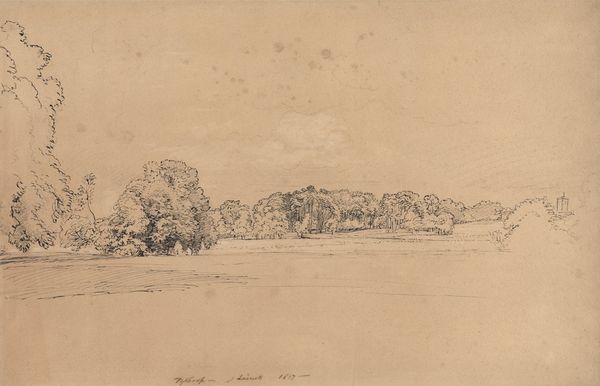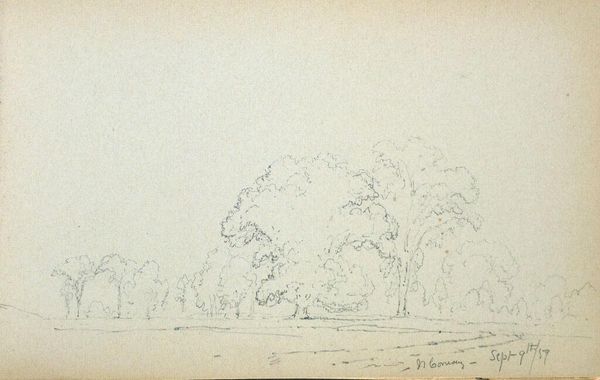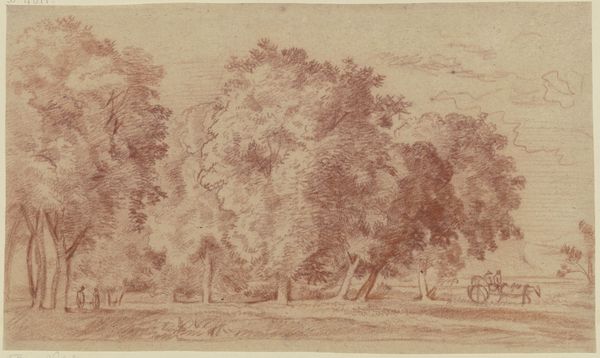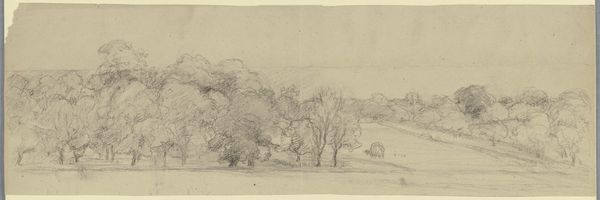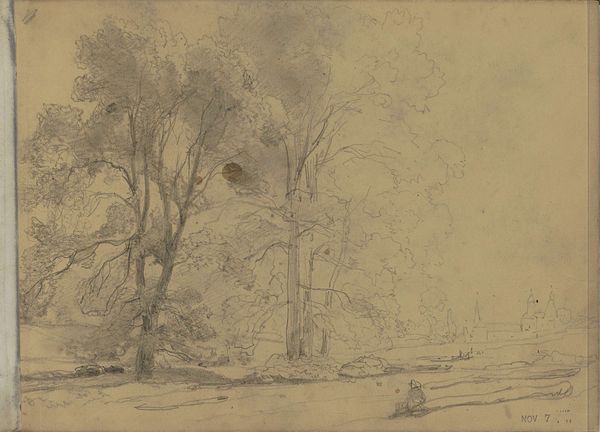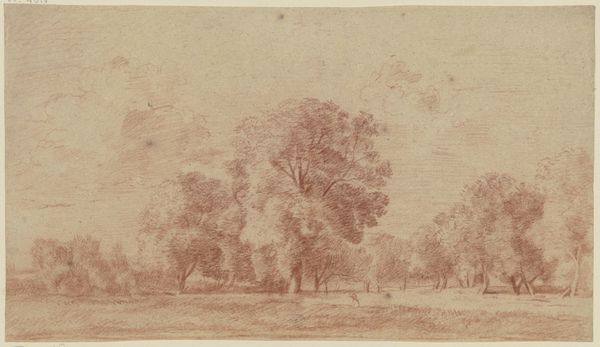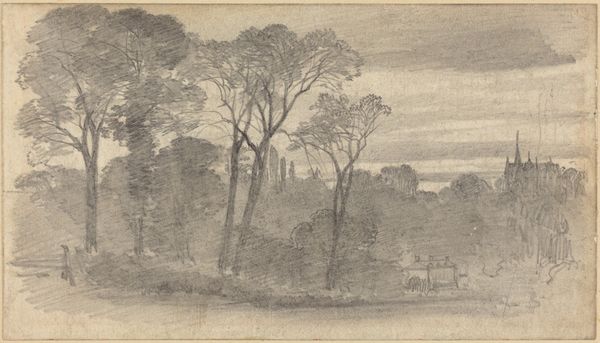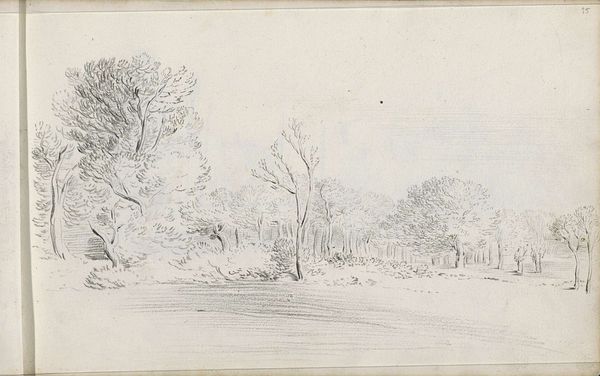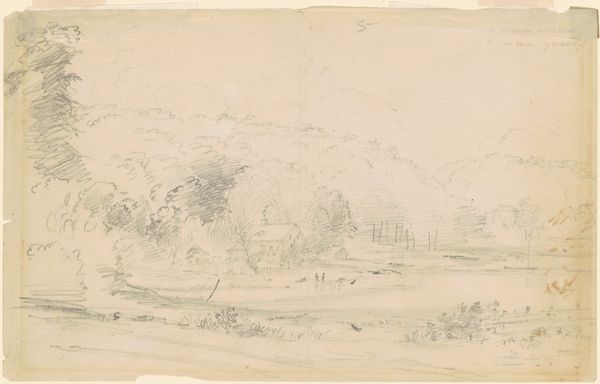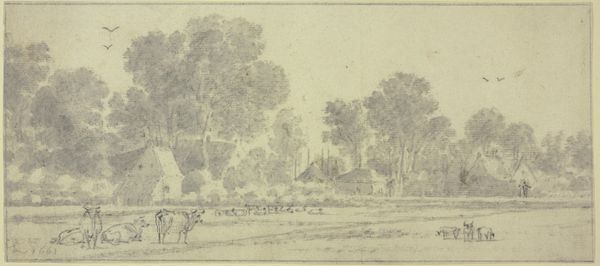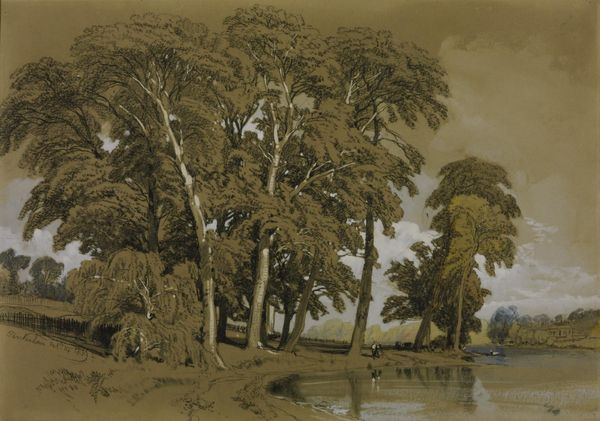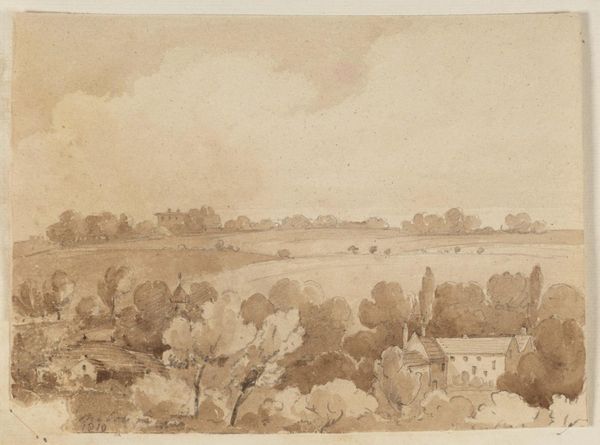
Copyright: Public Domain: Artvee
Curator: Here we have Camille Pissarro's "Grove of Trees," a pencil drawing on paper from 1859. It predates his more familiar Impressionist paintings. Editor: It's strikingly quiet, isn't it? Almost melancholic. The muted tones and bareness of the trees suggest a somber atmosphere. Curator: Yes, there's a contemplative quality to it. Notice how Pissarro uses subtle shading and hatching techniques to create a sense of depth and volume within the grove. His attention to the structure of the trees is quite remarkable, almost architectural. The artist really focuses on capturing the skeletal framework of each element in the composition, especially in that massive tree to the center-right. Editor: And that’s interesting given its placement in 1859, at a historical turning point. This drawing seems to foreshadow impending transformations; perhaps a societal reckoning. Was Pissarro commenting on how industrialization was consuming the natural world around him? Or something else more immediate and local? Curator: That is a possible interpretation. The relatively empty foreground certainly adds a sense of the viewer as outsider or intruder on the landscape. Although, from a formal standpoint, this stark foreground is a perfect foundation, and allows the lines of the tree line to form a strong horizon. This compositional contrast is striking and purposeful. Editor: I wonder about the accessibility of green spaces at the time. Who would have had access to stroll among groves of trees, and who would have been excluded? This drawing begs questions about leisure, class, and the environment. The lightness of touch and subtle rendering could hint to the fact this work-on-paper medium was designed for easy transportation, indicative of a life afforded by wealth. Curator: While your point regarding socio-economic access is salient, one must also not understate that this study, worked on paper "en plein air," is simply indicative of Impressionism's concern to seize transient sensory experience, to attempt to fix atmosphere, mood, and light in the natural world, which, I might add, it does to masterful effect. Editor: Perhaps, but even the artistic choices made to evoke these sensations are born from the realities of Pissarro's lived experience. By studying this drawing, we must look further than just his intention. What was the context, and what cultural conditions shaped both its creation and reception? Curator: An insightful observation, offering further context, I am certain, for other perspectives too. Editor: Agreed, the convergence of personal experience and larger historical contexts certainly broadens our understanding. Thank you for considering my take.
Comments
No comments
Be the first to comment and join the conversation on the ultimate creative platform.
